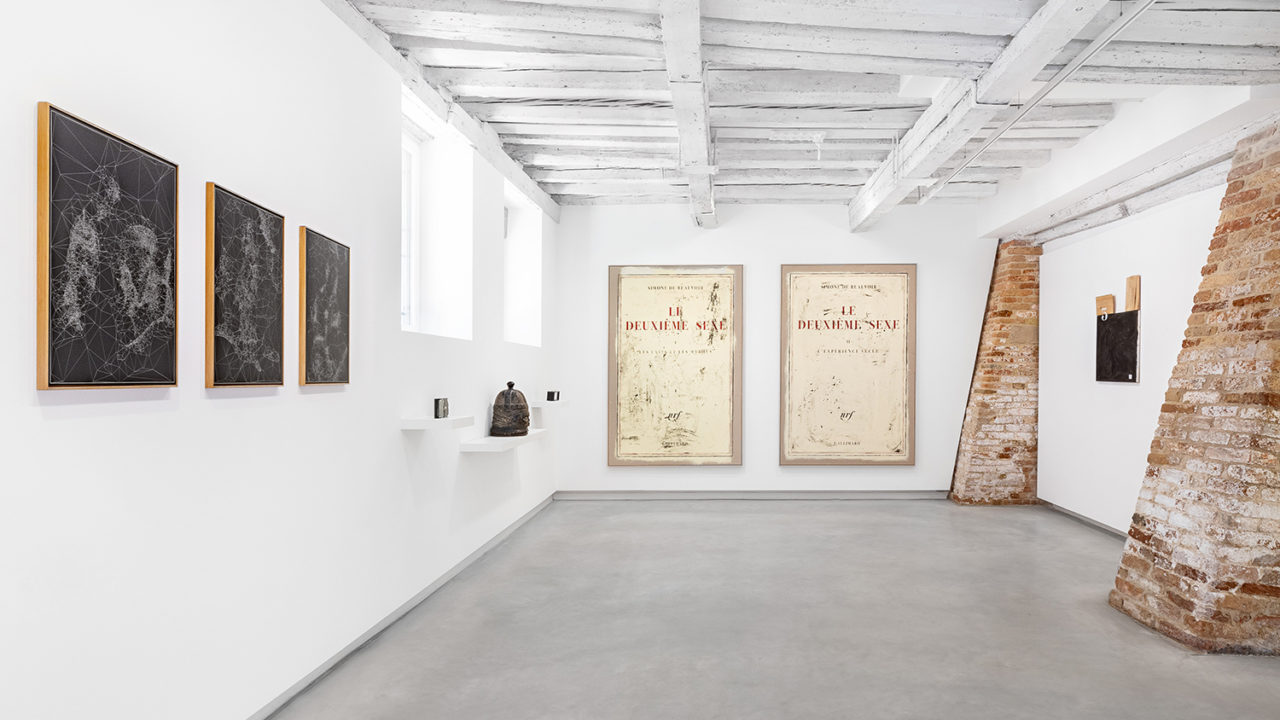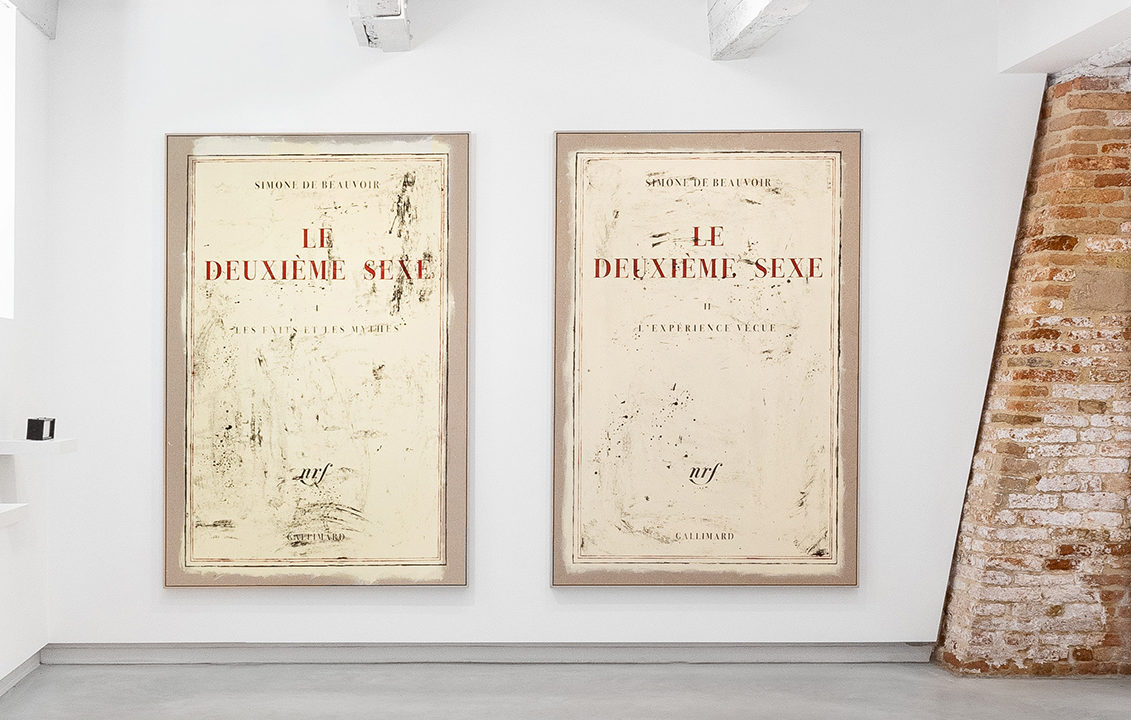MEMORY IS A WHIMSICAL AND BIZARRE BEING, COMPARABLE TO A YOUNG GIRL
04.09.21 > 13.11.21
Marignana Arte, Veneza
Curated by Ilaria Bignotti and Jonathan Molinari
How to Write About Memory?
Como escrever sobre a memória?
Há já algum tempo que João Louro trabalha sobre as capas de alguns livros conceituados que, ao longo das décadas, representaram momentos de rutura e revolução social e narrativa no panorama da literatura política, ideológica, de género e artística: para esta exposição, ele apresenta-nos aquele que foi um dos últimos livros a ser banido pela Igreja Católica, Le Deuxième Sexe (O Segundo Sexo) de Simone De Beauvoir.
Para esse feito, Louro usa uma tela crua para cada um dos dois volumes (Fatos e Mitos, Experiência Viva): no final da década de 1940, a autora – considerada uma das fundadoras do pensamento feminista emergente das fileiras do existencialismo francês – explorou o sistema complexo de submissão feminina através de uma análise sistemática que envolveu uma variedade de disciplinas académicas. Com isso em mente, a abordagem de Louro sobre esse processo histórico revolucionário envolve as ampliações das capas originais dos dois volumes do livro, com o objetivo de instigar o impacto propulsor das ideias de De Beauvoir; por meio da sua análise visual do tipo de letra, Louro convida o espectador a reavaliar o design e as cores usadas para enquadrar as palavras do título do livro, a se engajar numa luta que nunca cessou, quaisquer que sejam os atores de então e agora, e reconhecer que essa igualdade dos sexos transitam antes de mais nada pelos significados que atribuímos à nossa linguagem quotidiana.
O dispositivo “memorial” que Louro escolheu para expor junto a essas duas obras gira em torno da nota de um dólar. “Um objeto pessoal”, observa “no sentido de que representa um momento crucial na minha carreira e na minha vida pessoal”. Este mesmo dólar foi o resultado de um importante projeto no qual o artista participou em 2005, a saber “InSite- Art Practices in Public Domain em San Diego”, que expôs a dinâmica da lavagem de dinheiro nas relações transfronteiriças entre San Diego (EUA) e Tijuana (México).
Adotando o automóvel como metáfora e explorando repetidamente o seu valor nas economias atuais, o projeto começou com a recuperação de um carro europeu descartado num aterro sanitário de Tijuana e a sua transformação numa espécie de “joia”, graças a uma camada de tinta folheada a ouro. Depois de transformar este pedaço de sucata numa escultura dourada, o automóvel (The Jewel) foi exibido e leiloado em San Diego. O dinheiro arrecadado no leilão foi doado a uma escola primária de Tijuana, e os seus alunos foram desafiados a intervir nas notas de um dólar do pagamento, usando-as como base para seus próprios projetos. Graças a esta intervenção, o dinheiro adquiriu vida própria, igualmente complexa no domínio do valor simbólico, para se reciclar mais uma vez e reentrar na economia norte-americana. Desse modo, a nota de um dólar bem emoldurada em exibição aqui adquire um significado especial porque, por acaso, apareceu nas mãos do artista algumas semanas depois quando pagou por um café num posto de gasolina.
Enquanto isso, o presente escritor realiza praticamente a mesma operação, confiando às palavras a tarefa de descrever uma exposição que por sua vez se esforça para oferecer uma narrativa plural – histórias de dor e amor, intensas, mas tão leves como a respiração, caprichosas e bizarras como a memória que tenta por meio da obra de arte – e, assim, localizar os gestos e pensamentos, ações e objetos do quotidiano. Pequenos tesouros privados que oferecem uma maneira de subir ou descer e reunir a humanidade com a vida e o cosmos, com a Terra e além. Um meio de doar tudo às gerações futuras.




![BIG BANG [solo show]](https://joaolouro.com/wp-content/uploads/2007/10/big-bang.jpg)
